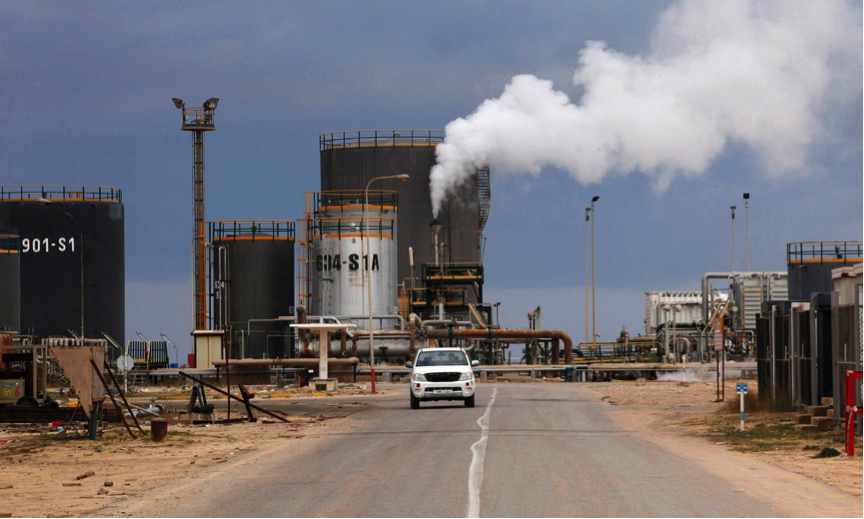by Sophie Nguebana
This week’s review looks at the Gazprom and Rosneft dispute over gas deliveries, Exxon’s cuts in its reported reserves, Rosneft’s cooperation with the National Oil Corporation (NOC) in Libya, and finally the Aramco IPO which could push other gulf states to list oil assets.
Gazprom and Rosneft dispute over gas deliveries
Rosneft has difficulties to secure gas supply from Gazprom for its Far Eastern Petrochemical Plant in Nakhodka. Igor Sechin signed a deal with China National Chemical Coorporation (ChemChina) for cooperation on the Far Eastern Petrochemical Plant, which is one of the largest industrial complexes in Russia and it will allow Rosneft to export polymers and petrochemical products to South-East Asia, particularly China. The plant uses natural gas for generating electricity and technological needs. The plant will need approximately 2.5 bcm of gas per year according to Rosneft. Igor Sechin asked Gazprom to supply the needed volumes through the Sakhalin-Khabarovsk-Vladivostok pipeline.
Gazprom responded that unless Rosneft is experiencing shortages, they are not going to do it. Gazprom expects Rosneft to have sufficient gas reserves from the Sakhalin I project, while Gazprom’s sources are committed to domestic consumers in the Far East, its Sakhalin II project, as well as supplies to China. From a commercial point of view, exports are more interesting for Gazprom than sales to Rosneft at domestic prices. Furthermore, Gazprom considers that supplying the plant will translate into “sponsoring” a competitor by selling its gas at the domestic price, allowing Rosneft to export all of its gas.
More on the topic: Подобедова Людмила. «Газпром» вопреки поручению Путина отказался продавать газ «Роснефти». РБК, February 20, 2017. http://www.rbc.ru/business/20/02/2017/58a6fdde9a79478823adcbc5
ExxonMobil forced to make cuts to reported oil and gas reserves
In its 10-K annual report, ExxonMobil’s reported oil and gas reserves dropped by 19 per cent last year (from 24.8 bln barrels of oil at the end of 2015 to 20 bln boe at the end of 2016). This mainly came from the revision of heavy bitumen reserves at the Kearl oil sands project in Canada, which also became the largest drop by a big international company in a decade. The reason for the revision is low oil and gas prices, which made some of ExxonMobil’s assets no longer qualifiable as proven reserves. To compensate the drop in reported reserves, the company has intensified new projects and acquisitions in the US, Papua New Guinea, Indonesia and Norway. Besides, Chevron’s expansion of its Tengiz project in Kazakhstan boosted Exxon’s reserves as it has a 25 percent stake. Exxon also added 2.5 bln boe through oil discoveries in Nigeria and Guyana. Thus, additions to its ‘unconventional’ shale resources in Pennsylvania and the Permian Basin of West Texas will increase its resource base.
More on the topic: Ed Crooks. ExxonMobil forced to make cuts to reported oil and gas reserves. Financial Times, February 23, 2017. https://www.ft.com/content/0145de6a-f957-11e6-9516-2d969e0d3b65
The Russian and Libyan Crude Oil Cooperation
The National Oil Corporation of Libya and Russia’s Rosneft have signed a preliminary agreement for cooperation on crude exploration and production as the struggling North African nation seeks to boost output.

According to the agreement, the two companies are assessing opportunities in Libya for oil exploration and production. The NOC said the deal solidifies the Libyans’ desire to encourage investment by foreign oil companies in order to allow the country to produce 2.1 million barrels of oil per day by 2022. By the end of 2016, Libya produced about 600,000 barrels per day and plans to double its production in 2017, notably thanks to the reopening of oil terminals in the east of the country.
More on the topic: Anjli Raval. Rosneft, NOC agree to crude oil exploration cooperation Financial Times. February 21, 2017. https://www.ft.com/content/0b15cb5e-2f1e-35da-8b6d-ec85790c7457
Aramco IPO could push other gulf states to list oil assets
Saudi Aramco’s financial situation has led it to hold an IPO in order to increase income and decrease risk. The listing of Aramco IPO-ARMO.SE, expected to be the world’s biggest IPO and raise tens of billions of dollars, is a centerpiece of the Saudi government’s ambitious “Vision 2030” plan to diversify the economy beyond oil. When the plan was announced in June 2016, it pledged to “transform Aramco from an oil-producing company into a global industrial conglomerate”, although Saudi officials still debate the shape the company should take.
A leading economist in the region, Nasser Saidi now suggests that this might trigger other gulf states to do the same. He mentions that the UAE, Kuwait and Qatar are potential followers. But in order for the IPO to be successful, Saidi mentions that Saudi Aramco should fix certain issues related to governance, transparency and ownership. Saidi also pointed to questions concerning the 20 percent royalty and 85 percent tax that Aramco pays to the government, which many investors believe could lower its value in an IPO.
This might change the way the energy sector is formed and remove power from the state-owned companies who took power from the IOC’s in the middle of the 20th century.
More on the topic: Aramco IPO could push other gulf states to list oil assets, Reuters, February 23, 2017 http://www.cnbc.com/2017/02/23/aramco-ipo-could-push-other-gulf-states-to-list-oil-assets-economist.html
Sophie Nguebana is a student at ENERPO Program, European University at Saint Petersburg. She can be contacted by email: snguebana@eu.spb.ru
Stories are weekly collected by the reporting team: Timothy Abraham, Alexander Geysman, Elisabeth Nguebana, Sophie Nguebana, Daniel Tsvetanov, Alberto Perego.

